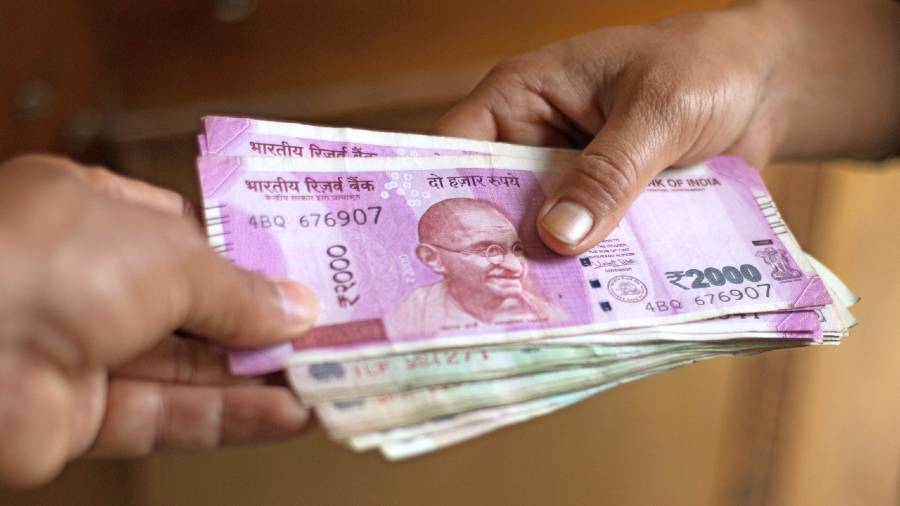The future lies in services, not manufacturing. This is good news since India has a greater comparative advantage in services than in manufacturing, and should be building on its strengths. Instead, the government seems obsessed with manufacturing and is pouring enormous subsidies into that sector. This is a mistaken priority.
The services that require priority are not just high-profile sectors like IT but education and health, and both have been grossly underfunded for decades. Rising subsidies for manufacturing will cut into limited funds for human development. The public debt/GDP ratio is near a record 90% even as interest rates are soaring, squeezing budgetary resources further. The subsidy for Vedanta-Foxconn’s proposed silicon fab could exceed the annual outlay on the Mahatma Gandhi National Rural Employment Guarantee Act (MGNREGA).
Atmanirbhar is almost entirely about manufacturing. The sectors getting support include food processing, organic farming, iron, copper, agrochemicals, electronics, industrial machinery, furniture, leather and shoes, auto parts, textiles and Covid-related items (coveralls, masks, ventilators). Not a single service industry here.
The production-linked incentive (PLI) scheme provides massive subsidies to corporations meeting specified investment and production targets in 14 sectors, all manufacturing. . They include mobile phones and components, bulk drugs and active pharmaceutical ingredients (APIs), autos and auto parts, white goods, textiles, specialty steels, high-efficiency solar modules, telecom and networking products, and sundry electronic components.
In some miracle Asian countries, autocratic governments ‘picked the winners’, focusing government support on a few sectors that were export-oriented and became world class. These governments were ruthless in matters like land acquisition, labour laws and closure of non-performing units. But India is a messy democracy that cannot get tough in these respects. It faces a real risk of being saddled with a cavalcade of new white elephants. In that case, our banking sector will once collapse under massive dud loans just as it has cleaned up its books after a decade of effort.
In a democracy, populism typically defeats technocratic ‘picking the winners’. Industrial policy can work if limited to few sectors of considerable potential. But, in India, it is impossible to pick just a few winners. Lobbies will demand extension to every other sector, and opposition parties will promise such extension at election time.
Already, Atmanirbhar and PLI are so broad that it is difficult to quickly say what manufacturing has been left out. Every ministry thinks its industries are potential winners. No ministry dares say it has losers meriting winding up.
Services too have received government support over the years, but nothing as concentrated as the freebies bestowed on agriculture and now being bestowed on manufacturing. Without special focus, the share of services in GDP has risen steadily from 30% in 1950 to 55% last year. This pattern is common across the globe. The share of services in GDP is far higher in advanced economies like the US (79.9%), UK (79.3%) and Japan (69.5%). It is also higher in upper middle-income countries such as Brazil (72%) and Mexico (60.4%). The only exception is China, where the share of services is as low as 49.7%, thanks to its altogether exceptional model of industry-led exports. As a democracy, India cannot imitate the Chinese model.
India has enjoyed enormous success in IT services. But these account for only a small portion of total services. Indeed, our GDP data have never even sought to calculate a separate figure for the contribution of IT services. India’s neighbours have no comparable IT industry, yet their shares of services in GDP are similar to India’s – 57.5% in Sri Lanka, 52% in Pakistan and 51.3% in Bangladesh. Critics are simply wrong to claim that India’s share of services is too high.
In his latest Monetary Policy Committee (MPC) report, Shaktikanta Das said that in the first quarter of FY2023, India had a merchandise trade deficit – the deficit in trade in manufactured goods – of a whopping 8.1% of GDP. This would have sunk most countries. Fortunately, India also had a surplus of 5.3% of GDP in services and remittances, which brought down the current account deficit to a manageable 2.8% of GDP. Services are by far the strongest part of the Indian economy and are saving us from disaster.
The latest news on the merchandise trade front shows further deterioration. The trade deficit soared to $30 billion in July and $28 billion in August. At this rate, the trade deficit in the second quarter of FY2023 may be 11-12% of GDP. Some may argue that India desperately needs import substitution in manufacturing to reduce the imbalance. The right conclusion is that the trade deficit has worsened despite rising import duties for five years, plus Atmanirbhar and PLI. The approach is not working.
The answer is not to pour evermore money into the wrong bucket. Economist Anne Krueger demonstrated decades ago that a dollar invested in export promotion yields more than a dollar invested in import substitution. Becker showed that investing in human capital was the best investment. Those are the right directions in which to go.


